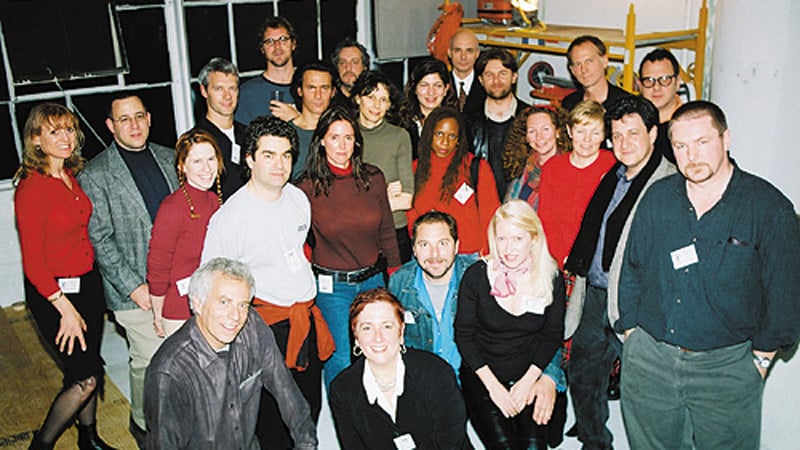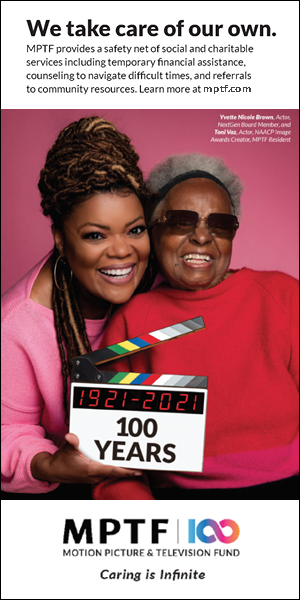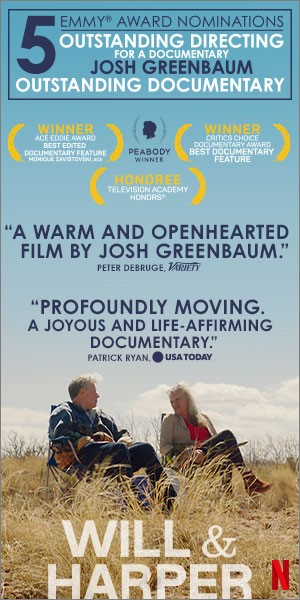Watching New Yorkers come together as a community over the last year has been an inspiring sight. Watching New York filmmakers stand by each other over the last decade has been equally inspiring for those in the independent film world.
Did you know that eight out of the last nine Grand Jury Prize winners at Sundance have been films independently produced in the New York area? Or that despite the demise of Good Machine and The Shooting Gallery, indie-driven companies like InDigEnt, GreeneStreet, HBO Films and IFC Films are making more headlines than ever?
With a spirit of cooperation at an all-time high in New York City, it was inevitable that East Coast independents would band together — as their peers did two years ago on the West Coast — to form a committee of their own. The DGA's IDC-(Independent Directors Committee) East held its first meetings this past fall. Although the group's initial focus was to review and possibly implement existing IDC-West programs — "Under the Influence" and "Directors Finder" screening series being the most successful examples — everyone involved with IDC-East is quick to add that making movies in Gotham presents its own set of challenges.
IDC-East is made up of directors Dan Algrant, Brad Anderson, Darren Aronofsky, Michael Caton-Jones, Raymond De Felitta, Tom DiCillo, Griffin Dunne, Mary Harron, Marc Levin, Alison Maclean, Mira Nair, Nancy Savoca, Steven Soderbergh, Rose Troche and Gary Winick. The last filmmaker on that list, Gary Winick, is partnered in a company with IFC Films, InDigEnt (Independent Digital Entertainment) that was a multiple awards winner at Sundance 2002, including Best Director for Winick's Tadpole.
Since Sundance, Winick has devoted a large amount of time extolling the virtues of the IDC to his fellow independents. "I knew my career would enter a new phase after Sundance," said Winick from InDigEnt's Manhattan offices. "What I didn't anticipate, was how active I would become in the Guild. Talking with filmmakers like Steven Soderbergh, I've come to realize that I am a conduit to other New York independents who never believed they could shoot their low-budget projects within the Guild. Every filmmaker who hears about the Guild wants to be a part of it. I believe this committee can bring independents together in a very effective way."
Speaking from his new base in Manhattan on the opening day of his newest film, Solaris, and DGA First Vice President Steven Soderbergh noted: "I almost feel like we're a bit tardy in getting this group up and running. There are so many independent filmmakers based in New York, myself now included, that the time is ripe. Clearly, there are different issues facing independents here than in Los Angeles, the chief one being how very difficult it is to shoot a low-budget movie in New York. In my mind, that's a key challenge. Can the DGA, in concert with other organizations, make it easier for independents to make low-budget and ultra-low-budget movies in New York City? I believe we can."
Longtime New York independents like Alison Maclean agree that Soderbergh's goal is attainable. Maclean, who was born and raised in New Zealand, has been based in New York City for more than a decade. She moved to Manhattan to immerse herself in the independent filmmaking community. "I've always had a romantic view of this city," said Maclean, now prepping to shoot her next feature in New York. "There is such an incredible pool of actors, and many of the films I admire and respect have come from New York directors. Having said that, while New York is the heart of independent film in America, independent directors here just don't get together very often. I feel this Committee can change that, particularly in so far as getting the word out on the Guild's low-budget contracts for features and documentaries."
New York native Raymond De Felitta has been making indie movies in New York since 1993. He acknowledged that the city has changed since the halcyon days of his debut feature, Café Society, where virtually any type of movie, irrespective of budget, seemed possible on the streets of New York.
"Can you still walk into New York City with that independent attitude and dream, and make the deals?" De Felitta asked. "Economics and confusion in the industry may force independents to abandon New York unless we have piles of money. All my stories are set in this city, so I've had to harden my resolve, and figure out new ways to avoid shooting out of town."
De Felitta believes that New York's long history as the keystone of American filmmaking may play a part in why so many independent directors call it home. "Movies in America started in Fort Lee, New Jersey," De Felitta explained. "When sound came in, they moved over to Long Island because you could import people from Broadway. The pulse of filmmaking has always been in New York. It's weird, but there is a kind of karmic connection to working in New York that filmmakers just thrive on."
Every IDC-East member readily admits that New Yorkers are a fiercely independent lot, from the vast diversity of restaurants they eat in, right on down to the myriad of fashion statements seen on the streets. So can a town filled with such go-it-alone, independent-minded filmmakers, truly come together and make this Committee prosper?
"The most encouraging thing in the brief history of the IDC-East," Soderbergh said, "is that everyone seems really excited by the idea that there will be communication throughout the independent directors community. A lot of us work in isolation and although we know names and faces, we just don't get together in the same room and exchange information. You could tell, at the recent IDC-East mixer we had, just how thrilled everyone was to be in the same room together. The Guild is interested for DGA member directors to improve their lot and I think they are responding to that."
Soderbergh described the Guild's reputation among New York indies as "an unknown quantity." The Academy Award-winning director also wants to help connect IDC-East directors with other New York-based artists. "There is an interaction to be had between people who are writing for the theater and our directors who are looking for great New York-based material," Soderbergh said. "New York City is the center of so many different kinds of media that part of what I hope happens with this Committee is to expose our directors to people who work in other art forms. That can be so fruitful from a creative standpoint."
Although still in its infancy, IDC-East has already inspired New York independents to start considering the next generation of filmmakers waiting in the wings. Many are seriously asking themselves how the Guild can influence and impact a new generation and attract them to joining the Guild.
"When I first joined the DGA, I wasn't really thinking about mentoring the next generation behind me," Winick said. "But after speaking with Steven Soderbergh and seeing his involvement in the IDC, I began to realize that I can make a difference, too. We are the future for keeping the independent spirit alive within the Guild and for steering our friends and colleagues toward the IDC. I do now feel a responsibility; and once I do more Guild pictures with larger budgets and more creative rights issues, I think I will feel that responsibility that much more."
Concludes Raymond De Felitta, who has experienced both peaks and valleys with each of his New York-based projects: "Success comes and goes in this business. We've all had moments of being very hot, disappearing, and then striving to get another movie made.
If you're really in it for the long run, and you identify yourself as a filmmaker, then there has to be some sort of continuity beyond status and money. This Committee is a way for me to feel like there is a home for all New York filmmakers. No matter where we are in our careers, we are all directors with the same aim."





